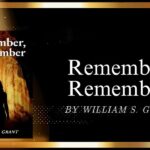From getting a tattoo for celebrations to breakups and makeups, and the passing of loved ones, tattoo artists see themselves as a supporting role in people’s stories, who’ve walked with them through various stages of life. One of such artists carving his own path in the industry is Timothy A. Beck, tattooing since 1997. Having picked up pencil and paper as a six-year-old, his creative gifts were evident from a very young age.
A native of Creve Coeur, Tim was born on January 18, 1979, in Peoria, Illinois, to Norma and James Beck, a Korean War veteran and dedicated Caterpillar worker who instilled in him the value of hard work. But a strong work ethic was not his dad’s only influence. His father’s two tattoos—one an anchor, the other an eagle—signified his days in the Navy and devotion to his country, but to his son, they held a mystical allure.
Recently, the Internet has boosted the popularity of tattoos and driven all kinds of trends, but Tim sees it as a double-edged sword. “I love how much it’s clued people into what tattooing is and opened people’s eyes that it is a valid art form. But at the same time, it made it possibly too popular.
Stepping Foot In The Industry
Tim was always drawn to the art in Mad Magazine, early cartoons, and newspaper comic books as inspiration for his art and illustrations. Music and art flooded his brain. During his high school years, Tim turned his attention to music, playing in several punk and ska bands, but despite some regional success, he knew he couldn’t make ends meet as a musician.
At the age of 17, he got his first tattoo. “I watched the guy do it, [and thought] man, I could do better than that… Which is wrong to be that prideful, but just watching him is what really got me into tattooing.” And with that, his search for another creative outlet—and a lifelong profession—was over.
Mastering The Art Of Tattoo
Tim sought out tattoo artists in the area to help train him, but there were few to be found back then. “[Tattooing] had a stigma attached to it—a biker mentality and a gang mentality. Prisoners had them. There were only a few shops in the area.”
He ordered some equipment out of a tattoo magazine and practiced unprofessionally on a few friends. Although it was not the right way, it got his foot enough in the door to bring some of his work to his future mentor and teacher, Nick McCarty, who took him under his wing and taught him the sacred art of tattooing the right way.
From there, Tim set out to master all the skills necessary to utilize the human body as a canvas. His work flows organically on an individual’s body. For him, it’s all about connecting and designing that makes it work. “You’re learning anatomy, the art and history of tattooing, and also how art works with the anatomy… like how does it stain the dermis, and how does it last?,” he explains. “You need to be taught that for years to really know it.”
Tim’s Firm Belief in Traditionalism
Ascribing to a style known as American traditional, Tim is committed to the old-school, classic look and method of application. “I appreciate the classic style, mainly because there is generally a right and wrong, with little exception. So much art is subjective. The thing that’s beautiful about tattooing is that it’s not really subjective. It has to be something that is understood, it has to be iconic, and it has to be good. That’s why I like it: there’s no in-between.”
Having trained in the age of “new school”—a style distinguished by freestyling, bright colors, unique patterns, and an almost-cartoonish look—Tim’s faith in traditionalism remains firm. Characterized by bold lines, heavy blacks, and solid colors, tattoos in the traditionalist style are timeless. Religious and patriotic figures are common, along with other iconic imagery: daggers, anchors, hearts, and roses—each holding a unique symbolism. “All that old stuff has some sort of meaning,” he explains. “A rose wasn’t tattooed for no reason. The point of a rose was the beauty and shortness of life—how it has thorns, and how it has hardships.”
After about five years under Nick’s mentorship, Tim moved northward to the Chicago outlier of Elgin, where he worked under an artist called Cleen Rock One. He was also his friend and colleague and was known as one of the forefathers of ‘New School Tattooing.’ He returned to central Illinois in 2004, and not too long after moving back, he opened “Freedom Ink Tattoos” in the heart of Peoria, Illinois. In the same year, he married his sweetheart, Charlotte, and later became a father to a beautiful daughter named Lily. Then to follow, his son William and finally, Leo, his youngest boy.
His Achievements
“I almost don’t even view myself as an artist. I realize what I do is art, but at the end of the day, I’m a craftsman. I’m trying to make this buzzing, vibrating machine make a beautiful picture on you. I’m like a dentist.
As a well-rounded tattoo artist, Tim specializes in diverse styles and is the inventor of the “patch tattoo,” also known as an embroidered style that mimics a realistic patch or embroidery in the skin. He has been tattooing for over two decades in some of the world’s most notable conventions. He has received several awards and is frequently featured in the top tattoo magazines in the world.
Along with a full, thorough apprenticeship, he has attended seminars and continued education on sterile fields, cross-contamination, and blood-borne and air-borne pathogens. Tim has been recognized repeatedly as one of the top tattooers in the world.
Tim has also designed the logo for the multi-platinum selling band, Fallout Boy. He also often travels on the tour bus with the band “Blue October” and has tattooed on different tour dates at the venues for their fans.

















